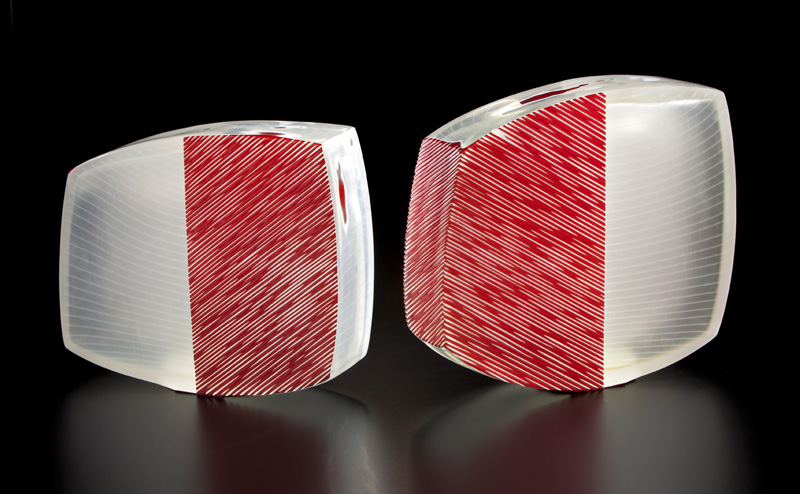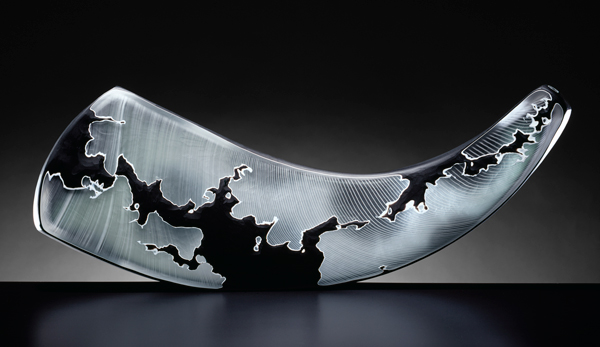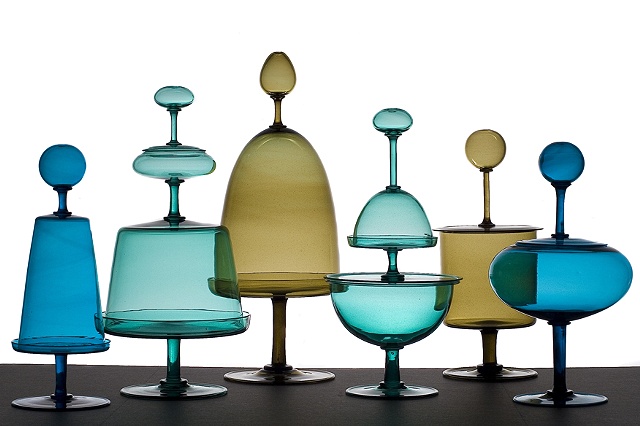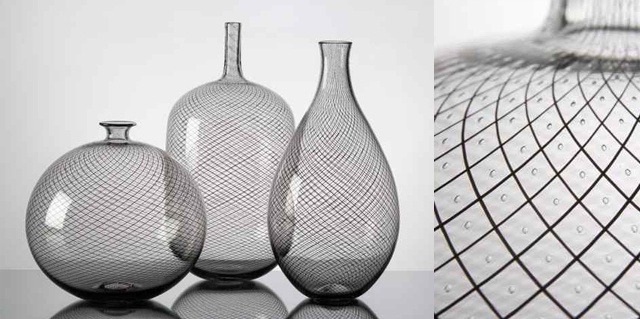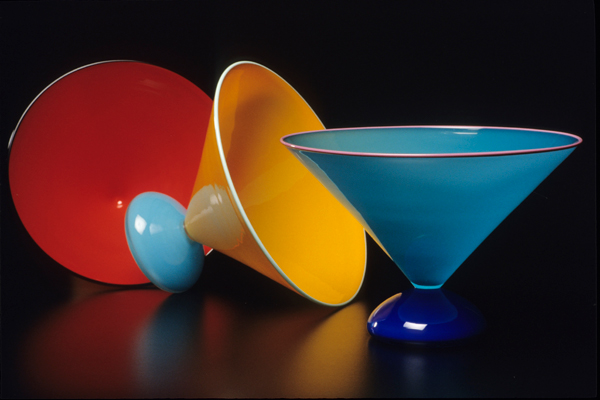Glass is not a forgiving material. It demands an involved process and requires careful planning and manipulation. As the most direct way for Ethan Stern to leave his mark, engraving has become his voice within the medium. The process of carving is a reductive one; material cannot be added once it is removed. This action of continuously revealing layers adds a significant amount of weight to each step and the choices made, allowing the process to play the ultimate role in defining the relationship between the surface and form of each piece
“At the most basic level, my work is an ongoing exploration of abstraction and the expressive qualities of form, color, texture and light. I use glass as a catalyst to help answer questions about how we see our environment, the objects we use everyday and the spaces we occupy. I am very aware of how my physical surroundings influence the qualities of each piece. I live in an urban area and work in an industrial part of Seattle. I cannot help but allow the hue of the day and the contrast between the engineered and natural landscapes permeate my sense of beauty. Translating this information into my recent work has led to imagery and form inspired by design, architecture and the visual deconstruction of my surroundings.
In the past, my formal investigation has been limited to shapes that are flattened and sculpted to have geometric edges and tight corners creating a strong silhouette. I have been drawn to this way of working not only as a means to explore pure form, clean lines and minimal composition, but to create a canvas for texture and pattern on the surface. While these forms have allowed for a significant amount of exploration, I have become interested in a more direct investigation of the role architecture plays in my artistic practice and the human interaction with physical surroundings.”
Stern’s newest work attempts to examine how objects on a human scale can be viewed as architectural. How much does scale influence our interpretation of beauty and perfection? Drawing from the idea that architecture can be more than a building, more than a large square structure which functions before it speaks, Stern feels challenged to investigate how we relate to the objects we live with. Can balance and contour dictate how we interact with the materials around us? If standing in front of a building hovering above you feels imposing, what happens when its form has no right angles or tilts and curves like the human form? Through blown glass objects reflective of these architectural forms, Stern investigates how our urban environments directly influence our human experience, while allowing the work and process to interact with the public in new and exciting ways.
Ethan Stern lives and works in Seattle, WA. where he operates Diamond Life Studio. You may learn more and view works at www.ethanstern.com. Ethan will exhibit new works at the Hawk Gallery in Columbus, OH on March 31st 2012.

